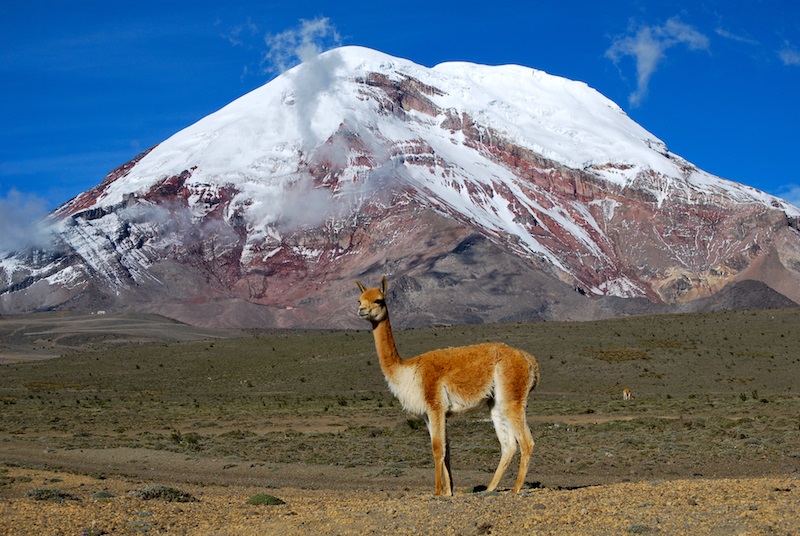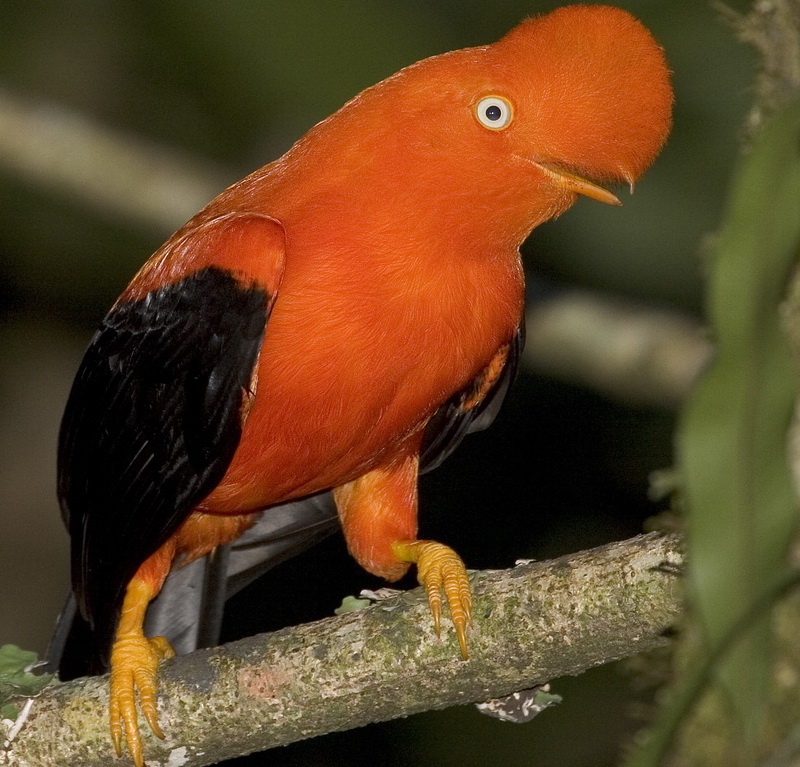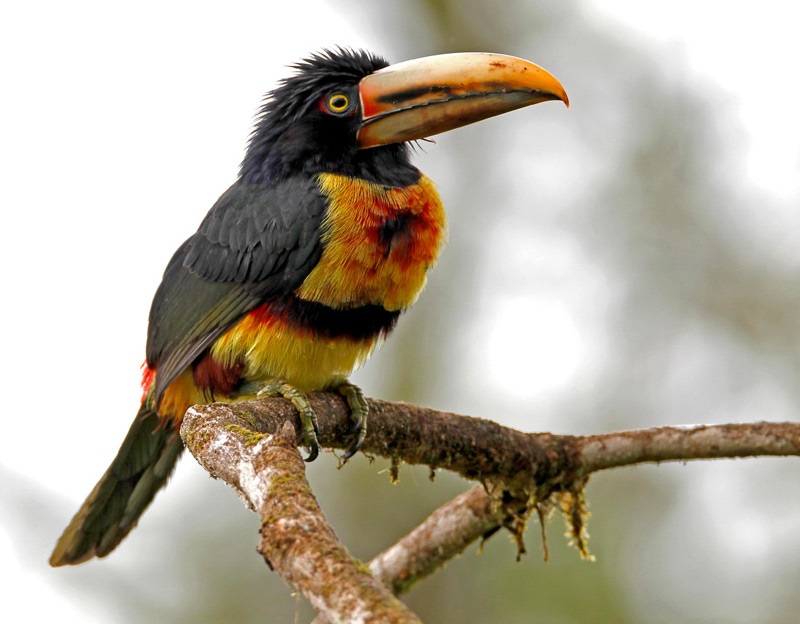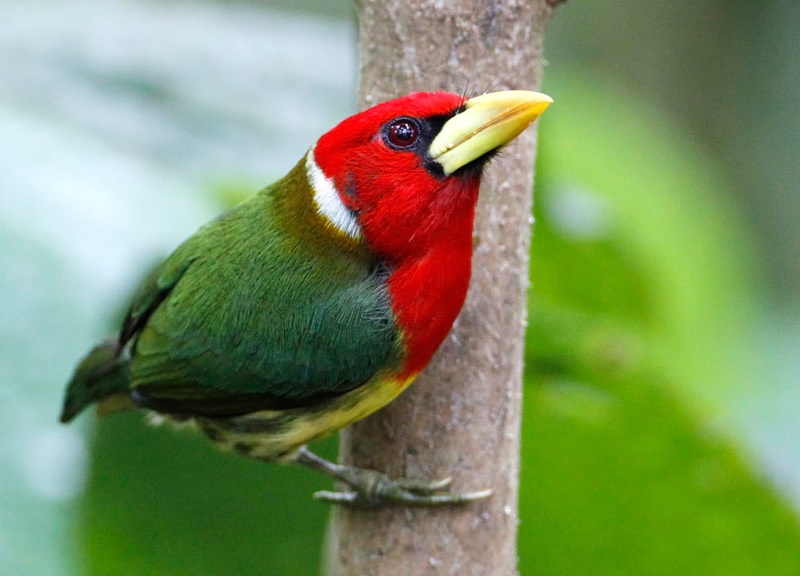Located in the heart of the Tropics, crossed by the equator, yet Ecuador has virtually all the climate types because it ranges from the Andes to the sea covering almost all the climate steps vertically so it is considered a mega-biodiverse country.
The Ecuadorian mountains allow you to travel after breakfast from the high snowcaps, across the Andean valleys, through the highland rain forest and stop in the middle of a steep subtropical forest for lunch. During the afternoon, going down to the tropical forest, one crosses humid and dense green areas while observing enormous rivers. After arriving in the Amazon basin, you can drive east or west and lay down on the beach while waiting for dinner.
All this in one day!

It’s hardly surprising then that the country is one of the most biologically diverse and rich there is. Mammals are scarce in the cloud forest are limited and they tend to hide in the undergrowth or climb high in the trees. However, the Amazon Jungle is filled with wildlife. Mammals of Ecuador’s Amazon include river dolphins, jaguars, ocelots, a variety of monkeys, such as Spider monkeys, Squirrel monkeys and Woolly monkeys as well as tapir, sloths and anteaters. The very lucky may spot a jaguar. Reptiles abound and include large iguanas, colourful geckos, tortoises, lizards, the caiman and massive anacondas. Of course there are an enormous numbers of insects including some spectacular butterflies, moths and beetles. In the Amazon River are catfish, stingrays, piranhas and eels. The renowned Galapagos Islands boast a wide variety of mostly unique wildlife. Reptiles are king here with Pacific green turtles, giant tortoises and iguana species. The seas are home to fur seals, dolphins, whales, shark and rays. The Galapagos are also rich in bird life with frigates, boobies, albatrosses, cormorants and Galapagos penguins.
It is impossible to get bored on any birdwatching trip. Ecuador has an inventory of 1600 bird species in an area no bigger than Colorado State. Spanning 4 natural regions, Ecuador offers a range of experiences.

During the last decade or so, the country has developed a great paved and concrete road system all around the three mainland areas. Now the coast region, the highland range and eastern Amazonian lands are all connected by excellent roads that provide a fast, safe and totally enjoyable trip from region to region. There is a huge variety of lodges suiting every pocket, many are luxurious and specialise in birdwatching. Tour operators will help with all the details of your trip to Ecuador’s world-class bird sanctuaries.
On the Galapagos Islands, made famous by Charles Darwin, 25 endemic birds are present. The Galapagos Hawk, the Blue, Red and Nazca Boobies, the Huge Black Broad Albatross and a nice selection of Darwin finches, are commonly found on specific islands. There are less expensive land tours to some of the nearby islands. Or, take a special cruise that sails around the islands looking for the special fauna on each island. See the offshoot page for links and information.
Beginning just behind the Guagua Pichincha Volcano, west of the city of Quito, is the Choco Corridor area. It was once a forest that survived the ice age, and is now a marvellous birding hot spot and wildlife refuge. The area is geographically diverse with hundreds of bird species depending on the different climate zones. The area offers an easy birding experience. Enjoy the steep slopes of the subtropics, the canyon structure of the upper tropics and the humid lush tropical forests. In this area you will have the best bird photography opportunities and a chance to see ground, canopy, and water birds. Specialized lodges offer excellent birding opportunities for everyone from the novice to hard cores birders.
The Eastern area, which includes the Paramo, the Andean Cloud Forest, the Upper Tropical Forest and the Amazon Basin provides a good selection of affordable hostels and deluxe lodges. The area covers several National Parks located in different climate zones. These areas protect the Andean Condor, the high barren plains birds, and hundreds of passerines and no-passerines birds. The mountainous geography allows observation of birds almost directly at eye-level, making for easy to moderate birding.
In the Amazon basin, birding is different. The sides of the rivers offer open viewing, moderate viewing is offered in the open areas and a more difficult viewing opportunity is experienced in the swamps. The use of recording and the skills of a top professional guides are almost a necessity for a successful day in some places.

Fresh, extremely diverse and delicious food is offered in Ecuador. All types of native fruits and vegetables are grown as well as all types of meats and seafood. Every place you go, you will find different tastes and many freshly harvested ingredients. Ecuadorians expect fresh products in their diet not freezing products for future use.
A new Ecuadorian environmental policy has imposed strict rules to protect nature. A two-year prison sentence can be imposed if you are arrested for removing timber or destroying natural resources in protected areas. The creation of Socio-bosque partnership, between owners and the state, offers protection for thousands of pristine forests. The State conservation program gives a certain amount of money to the owner of a forest, and in return, the owner cannot disturb the natural forest for 20 years. This land protection is monitored by satellite. Currently 20% of the total country is protected in this way. By 2015, the protection project will cover 33% of the paradise of Ecuador!

The State is developing a scheme of low tax loans to small and medium land owners and local communities to create eco-tourist businesses and improve the safe and clean standard of living to all Ecuadorians. Ecuadorian people are generally very friendly to foreigners. Their natural happiness is contagious!
What is more health care in Ecuador is provided free for everybody by law, including international visitors, and there are dozens of new hospitals with modern equipment.
So, welcome to Ecuador, a top world-birding Eden!
Major Source: Fatbirder
Map Source: Googlemaps™
Photo Source: Birding Ecotours
